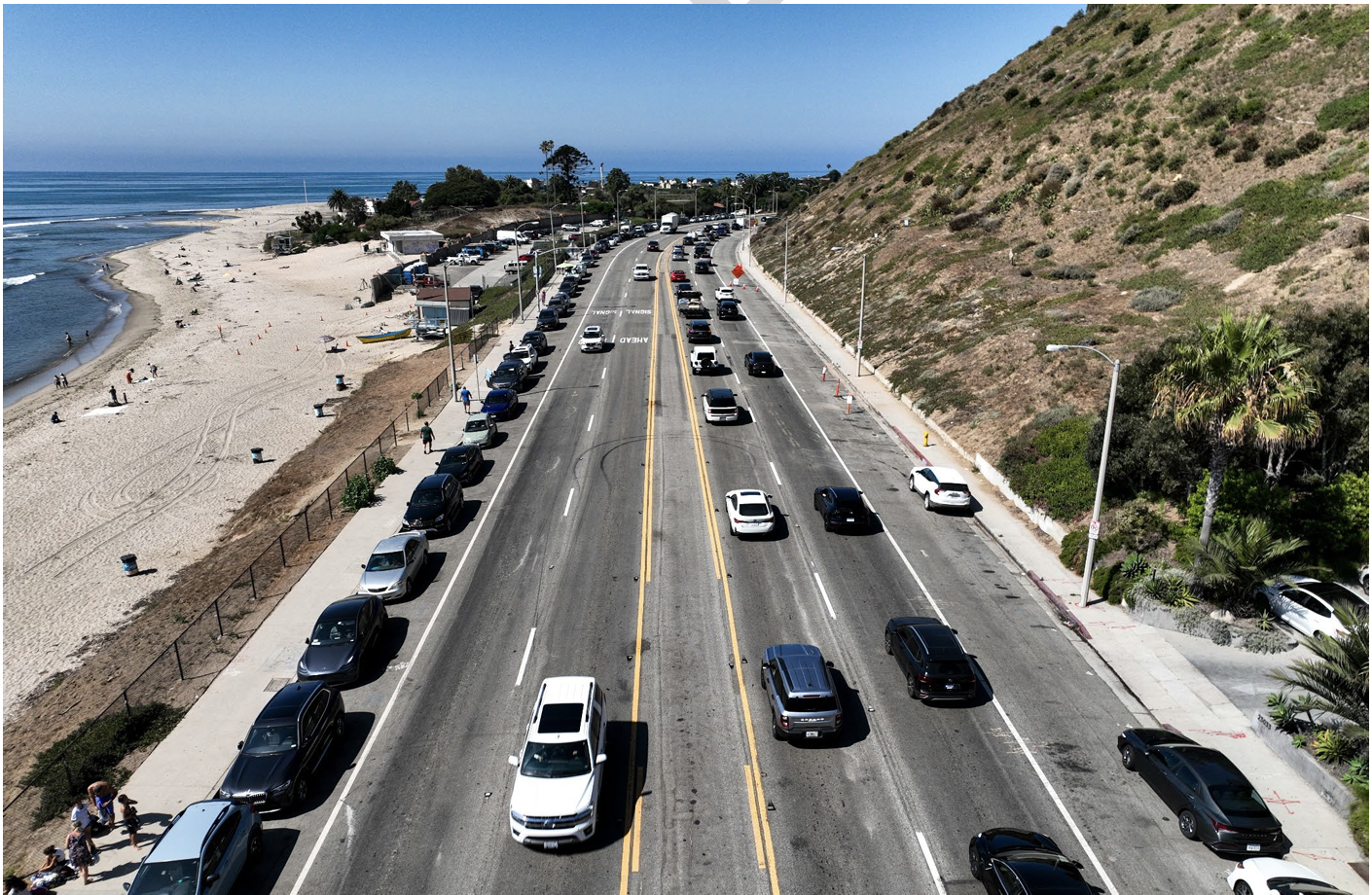![A potential Measure R2 L.A. County transportation sales tax could be two different ballot measures: a new half-cent tax and an extension of 2008's Measure R. Graph via SGVCOG [PDF]](https://lede-admin.la.streetsblog.org/wp-content/uploads/sites/50/2015/05/MeasureR2SalesTaxGraph-Edited.png?w=710)
There is a new chart out that shows some of what a possible new Metro sales tax, "Measure R2" might look like. As outlined in this earlier article, the sales tax would be put to the voters in the presidential election in late 2016, but the political process shaping the proposal is happening right now. If all goes according to schedule, the Metro Board will finalize an expenditure plan in July 2015.
Thanks to commenter calwatch for drawing SBLA's attention to this briefing packet [PDF] from San Gabriel Valley Council of Governments (SGVCOG). The various subregional COGs have a lot of say in shaping the massive project lists, "Mobility Matrices," which are being narrowed down into the Measure R2 expenditure plan. As calwatch characterizes them, "COGs are obscure collections of cities and Board of Supervisors' reps, but they are where the meat of priority setting and project picking is going on."
In the proposal as it now stands, there are basically two new Metro sales taxes - two different ballot measures - on the table right now:
- A new half-cent sales tax: "Metro staff is assuming that 50% of the revenue generated would be used for local return, transit operations and facility repairs. Metro staff is seeking subregional input on the remaining 50%, assuming the Metro Board elects to distribute the funds by a population- and employment-based formula to each subregion for transportation capital improvements."
- Extending Measure R's half-cent sales tax: generally continuing the 2008 "adopted expenditure plan consist[ing] of a funding split of 40% for transit capital projects and 20% for highway capital projects. The remaining 40% was split as 20% for transit operations generally, 15% for local return, and 5% for rail operations. Essentially, this meant that of the capital funding that was available, 67% went to transit projects and 33% went to highway and highway-related projects"
The SGVCOG documents (Exhibit E) also include some Metro focus-group polling, but it appears to be a fairly small sample: four focus groups of ten persons each. The conclusions appear somewhat predictable and inconclusive: among participants, "there is a strong sense that the traffic problem is getting worse" and three-quarters of participants state that they would "definitely" or "probably" vote "yes" on Measure R2 as presented.
Perhaps Metro's research shows otherwise but, in the past, voters facing a large list of bond measures sometimes just vote "no" on everything. What do you think, readers? Are two ballot measures better or worse? If they stack up against other bonds, such as the perhaps-now-dormant L.A. City road bond, is it likely that a two-thirds majority can be achieved?
Metro's new CEO Phil Washington starts this Monday, May 11. He is credited with success in passing and implementing Denver's FasTracks, including a ballot bond measure entirely for public transit, without all that counterproductive highway widening. It will be interesting to see where Washington weighs in on the Measure R2 processes underway.





